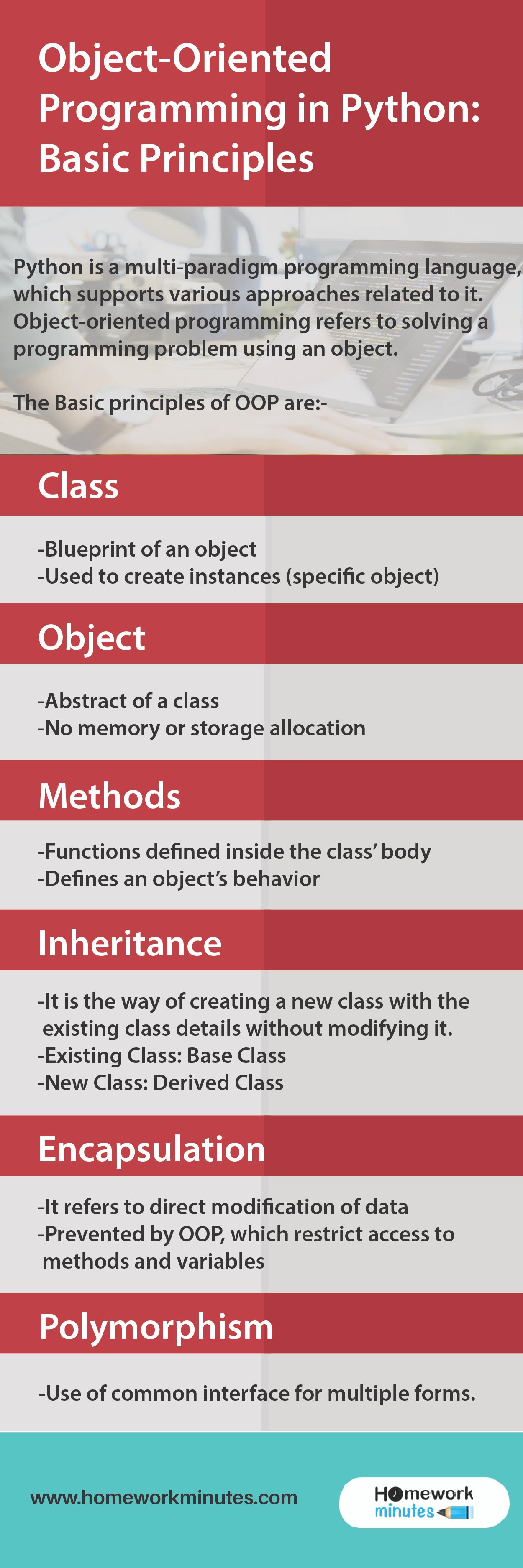Like other programming languages, Python is an object-oriented programming language. It allows us to develop various applications by using its object-oriented approach. Thus we can easily create and use its classes and objects. So today, we’ll discuss the basic principles of object-oriented programming in Python.
Also, read some of the related posts.
Python is a multi-paradigm programming language, which supports various approaches related to it.
Object-oriented programming refers to solving a programming problem using an object and classes. So these objects are like real entities such as books, pencils, etc. OOP focuses primarily on writing the reusable code. Also, it is a technique to solve the problem by generating codes.
The Basic principles of OOP are:-
Class
Classes are the blueprint of objects. These are logical entities that have some specific attributes and methods. Also, these are useful in creating instances (specific object). For example, if there is a class, it must have methods and attributes.
Object
Unlike in Java, Objects in Python have state and behavior. As these are abstract of a class, it contains real-world objects like the mouse, keyboard, chair, and so on. Programs include objects for memory or storage allocation.
Methods
Methods of functions are defined inside the class’s body or associated with an object. In object-oriented programming in Python, the method is not unique to class instances. Any object type can have processes in Python as defines an object’s behavior.
Inheritance
Inheritance is an essential aspect of object-oriented programming that simulates real-world concepts. It is the way of creating a new class with the existing class details without modifying it. Some existing classes are Base class, and new classes are derived classes.
Encapsulation
Encapsulation refers to the direct modification of data. They were prevented by OOP, which restrict access to methods and variables. The code and data are wrapped together within a single unit.
Polymorphism
It is composed of two words, ‘Poly’ and ‘Morph’ which means many and shapes. Here on task can be performed in different ways by using a common interface for multiple forms.
Data Abstraction
Data abstraction and encapsulation are synonyms because data abstraction is achieved through encapsulation. Now, what does abstracting data means? Abstracting something means giving names to things. So the name captures what the whole program does.
Thus it was a lesson on object-oriented programming in Python. If you need more assistance, then get instant computer-science assignment help from our experts.


